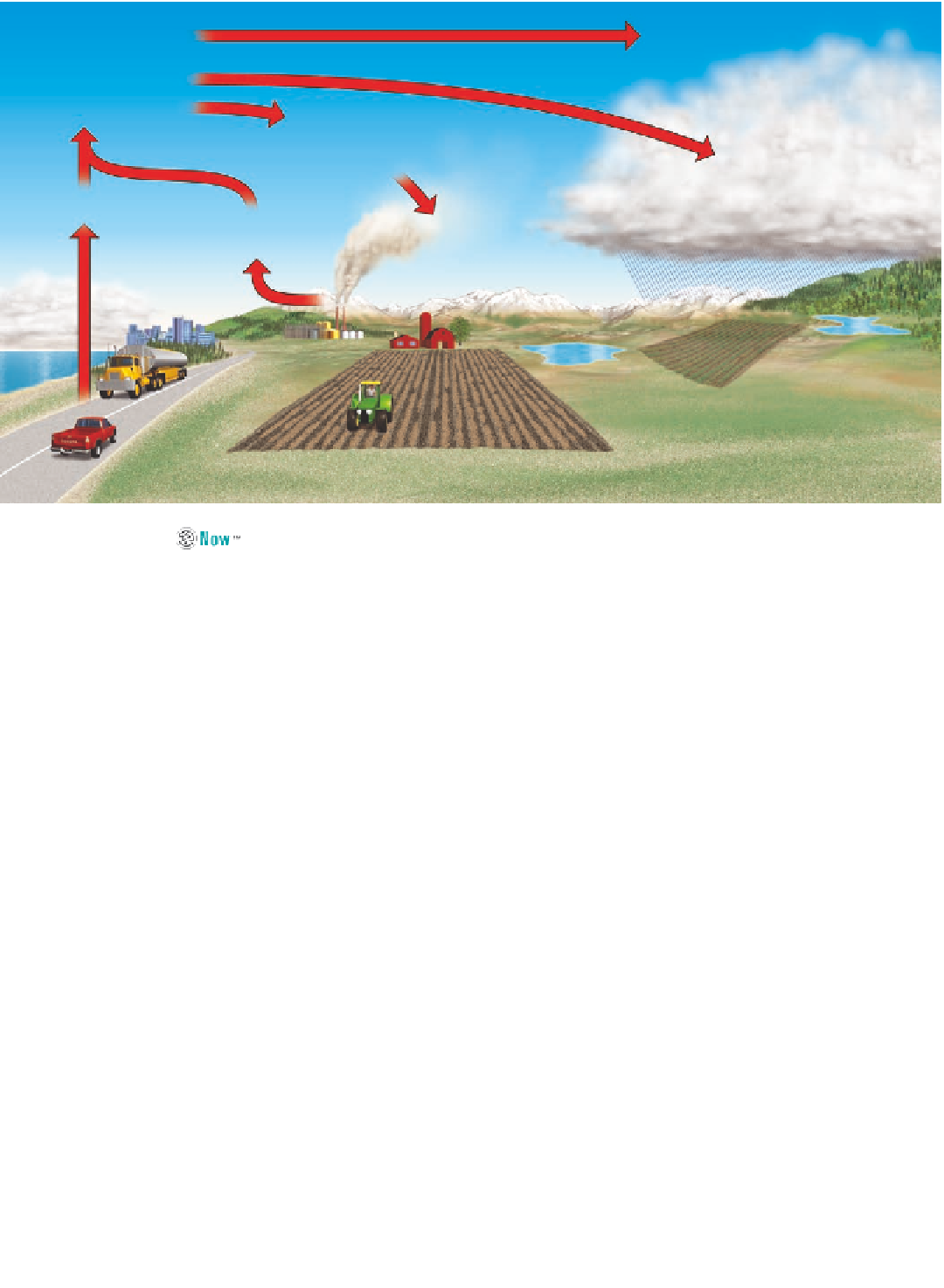Environmental Engineering Reference
In-Depth Information
Wind
Transformation to
sulfuric acid (H
2
SO
4
)
and nitric acid (HNO
3
)
Windborne ammonia gas
and particles of cultivated soil
partially neutralize acids and
form dry sulfate and nitrate salts
Wet acid depostion
(droplets of H
2
SO
4
and
HNO
3
dissolved in rain
and snow)
Nitric oxide (NO)
Dry acid deposition
(sulfur dioxide gas
and particles of
sulfate and nitrate salts)
Sulfur dioxide
(SO
2
) and NO
Acid fog
Farm
Lakes in shallow soil
low in limestone
become acidic
Ocean
Lakes in deep
soil high in limestone
are buffered
Active Figure 15-6
Natural capital degradation:
acid deposition,
which consists of rain, snow, dust, or gas
with a pH lower than 5.6, is commonly called acid rain. Soils and lakes vary in their ability to buffer or remove
excess acidity.
See an animation based on this figure and take a short quiz on the concept.
has a pH of 4.4-4.7 (Figure 15-7). This is 10 or more
times the acidity of natural precipitation, which has a
pH of 5.6. Some mountaintop forests in the eastern
United States and east of Los Angeles are bathed in fog
and dews as acidic as lemon juice, with a pH of 2.3—
about 1,000 times the acidity of normal precipitation.
In some areas, soils contain basic compounds such
as calcium carbonate (CaCO
3
) or limestone that can re-
act with and neutralize, or
buffer,
some inputs of acids.
The areas most sensitive to acid deposition are those
containing thin, acidic soils without such natural
buffering (Figure 15-8, green and most red areas) and
those in which the buffering capacity of soils has been
depleted by decades of acid deposition.
Many acid-producing chemicals generated in one
country are exported to other countries by prevailing
winds. For example, acidic emissions from indus-
trialized areas of western Europe (especially the
United Kingdom and Germany) and eastern Europe
blow into Norway, Switzerland, Austria, Sweden, the
Netherlands, and Finland. Some SO
2
and other emis-
sions from coal-burning power and industrial plants
in the Ohio Valley of the United States (Figure 15-7,
red dots, p. 354) end up in southeastern Canada. Some
acidic emissions in China end up in Japan and North
and South Korea.
The worst acid deposition occurs in Asia, espe-
cially China, which gets about 59% of its energy from
burning coal. Scientists estimate that by 2025, China
will emit more sulfur dioxide than the United States,
Canada, and Japan combined.
Learn more about the sources of acid deposition, how it
forms, and what it can do to lakes and soils at Environmental
ScienceNow.
Science: Harmful Effects of Acid Deposition
Acid deposition can cause or worsen respiratory
disease, attack metallic and stone objects, decrease
atmospheric visibility, and kill fish.
Acid deposition has a number of harmful effects. It
contributes to human respiratory diseases such as
bronchitis and asthma, and can leach toxic metals
(such as lead and copper) from water pipes into drink-
ing water. It also damages statues, national monu-
ments, buildings, metals, and car finishes.
Acid deposition decreases atmospheric visibility,
mostly because of the sulfate particles it contains. On
some days, the air in Grand Canyon National Park and












